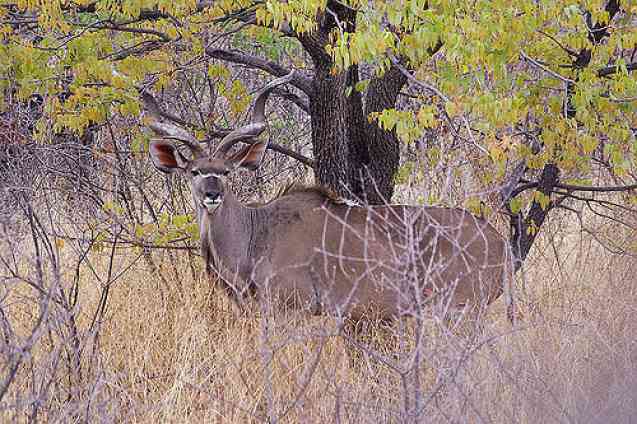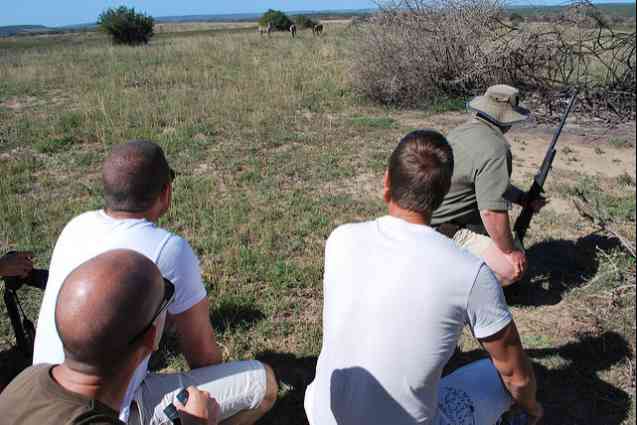Will I see the Big Five On My Walking Safari?
‘Will I see the Big Five if I go on a walking safari?’
This is a question we are often asked. The answer:
‘Maybe, but only if you’re really, really, REALLY lucky.’
The reason for this is multi-layered. In this blog we’ll attempt to answer it completely, explaining why, in fact, seeing the Big Five is not the major reason for going on a walking safari, even if it’s an incredible bonus if you do!
Bucket List: Safari + Big Five
An African safari is way up there on many people’s bucket lists and, for many (if not most) of them, one of their biggest wishes is to see the Big Five. It makes complete sense. Who wouldn’t want to marvel at enormous, gentle elephants, gorgeous-maned lions, prehistoric-looking rhinos, curly-horned buffaloes and stealthy leopard in the wild African bush?
And that’s what game drives are for, with knowledgeable guides and trackers. Even then, sometimes you may miss one or two (especially the elusive leopard). This is a safari, the animals are wild, and the habitats are vast. And that’s the beauty of it. Nature is unpredictable and free.
Walking Safaris
 Lake Naivasha by Ninara
Lake Naivasha by Ninara
So, then, why is it unlikely that you’ll see the Big Five while on a walking safari? Firstly, the animals have precise senses – they can hear and smell you coming from miles away. And they’re shy. Contrary to popular belief, even the larger animals in the bush would rather flee than fight.
Wild animals in game parks have become accustomed to seeing, and being in the presence of safari vehicles, but the same doesn’t apply to humans walking through their habitat. They’re scared of you – yes, even the enormous and fierce lion – and want to get out of your way as fast as possible. In other words, before you’ve even spotted them, they’ve heard or smelt you and have vacated the vicinity.
The Art Of Camouflage
 Spot the Kudu by Rob Oo
Spot the Kudu by Rob Oo
Secondly, wild animals are spectacularly talented in the art of camouflage. A leopard in dappled shade (he’d have to be fast asleep not to have bolted at the sound of your movement through the grass, but this is just an example, for example’s sake) on golden grass is almost impossible to see. So while you may not be spotting animals, they may well be watching you!
Micro-Systems
 Useful plants, SA by Jochem Koole
Useful plants, SA by Jochem Koole
Most importantly, though, is to realise that the point of a walking safari is not actually just to get up-close-and-personal with the animals, but more to experience the micro-systems of the African bush. And they’re fascinating!
It is hard to describe the enormity of the bush – the clear air, dust underfoot; the noisy silence filled with insect buzzes and bird calls; the uninterrupted views; the space; the tiny bugs scuttling through the grass; the animal spoor and dung that tells a whole story; the smell of the indigenous plants, many used medicinally; we could go on forever.
And that’s why you go on a walking safari. To learn about all those things from the local guide (usually two, armed and highly skilled guides, in areas where there are predators) and to experience the wonder of being as close to nature as is physically possible. There’s nothing quite like watching a little dung beetle collecting his ball of dung until it’s way bigger than him!
 Dung Beetle by Andi Gentsch
Dung Beetle by Andi Gentsch
Seeing the Big Five while you do that? Unlikely, but a huge bonus if you do. Seeing plenty of plants and insects and birds and smaller animals? For sure. Learning about the workings of the li’l guys, the soil, the plants and flowers? Certainly. Experiencing the sights and sounds of the bush? Definitely.
Walking Safari Safety
 Sit quietly! by Cristoffer Crusell
Sit quietly! by Cristoffer Crusell
So now that you know why you probably won’t see the Big Five on a walking safari, but you can see the value of it, here are some points to remember when walking in the bush:
- Never go on a walking safari without a guide. The guides are trained and knowledgeable on the ‘do’s and don’ts’ of the bush. They will not only ensure that you get the most out of your safari, but also keep you safe.
- Always do as the guide says. Immediately.
- Avoid bright colours. Wear clothes that blend into the bush you’ll be walking through, so that you remain camouflaged.
- Walk in single file, an arm’s length away from each other.
- Never, ever, run. An animal that sees a creature running will presume that you are prey or are dangerous and may try to attack you.
- Never underestimate the speed at which wild animals can run. While hippos and crocs look sedately lazy, they can attack at high speed.
- Quiet! Human noise will disturb the animals, either making them run away, or get angry. If you need to communicate at all, do so in a whisper.
- Do not smoke, eat or drink anything other than water.
- Never try to interfere – in any way – with the animals you encounter. This includes trying to change their behaviour or position for a good photo shot and feeding them. The feeding of wild animals is absolutely prohibited for both yours and the animal’s safety.
- Do not pick any flowers or plants.
Rewarding Experience
 Termite heap by Cathy T
Termite heap by Cathy T
So, the bottom line: while you may not see the Big Five on a walking safari, you’ll gain incredible insight into the workings of nature and the breath-taking beauty of the African bush and its creatures and micro-systems.


 Briony is a qualified pharmacist, published author and travel blogger living in Cape Town. She writes her own blog about travel, the arts, music and the good things in life, with a focus on accessibility. She likes watching the world go by, and sometimes it makes her nose twitchy, but mostly it provides golden nuggets with which to light up the page.
Briony is a qualified pharmacist, published author and travel blogger living in Cape Town. She writes her own blog about travel, the arts, music and the good things in life, with a focus on accessibility. She likes watching the world go by, and sometimes it makes her nose twitchy, but mostly it provides golden nuggets with which to light up the page.



